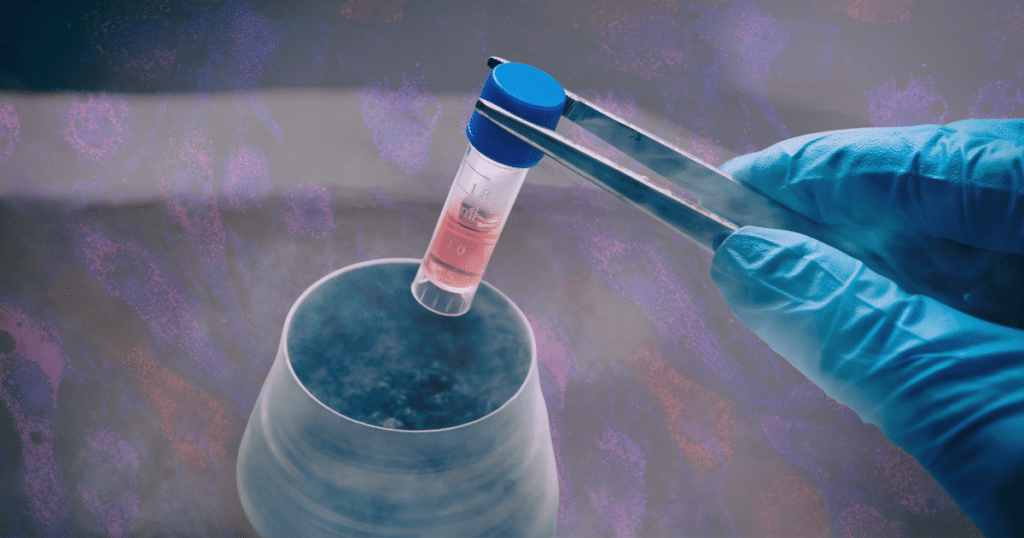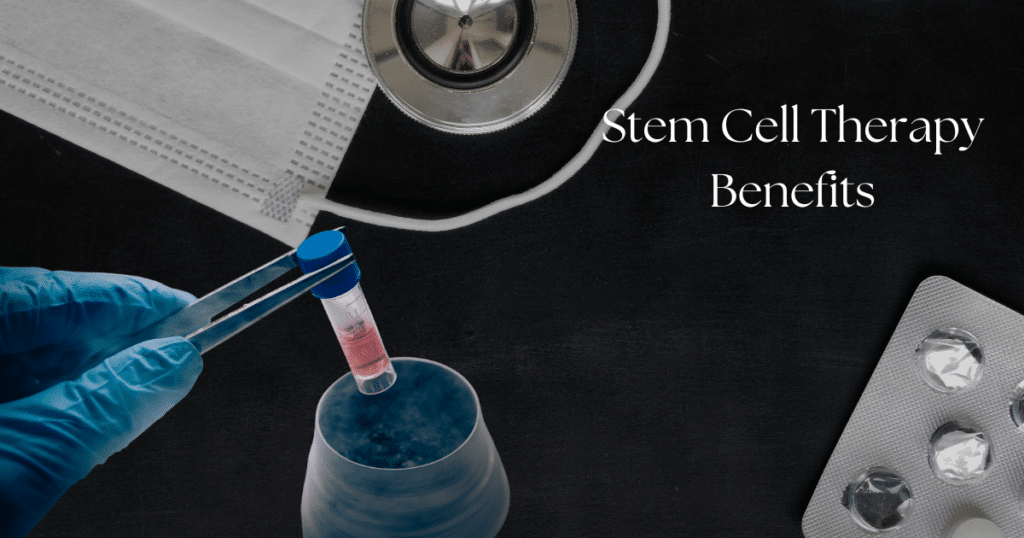
Understanding Stem Cells
Definition and Function
Stem cells are unlike any other type of cells. Where white and red blood cells can run through the “standard” cycle and have there specific jobs, Mesenchymal stem cells (MSC’s) have the ability to transform into different types of cells to help the body heal. The regenerative nature of stem cells is really amazing, because it could be used as alternative medicine to assist in the healing process of recovery and even heal (cure) from so many different types of traumas, ailments and inflamed area of the body.
It sounds like a lot, and it is, but again there is just something so intriguing about stem cells and how they work.
More specifically stem cells therapy offers the natural healing ability within the joints of our bodies.
Stem Cell Sources

Typically found in fat tissue (adipose tissue), blood and even bone marrow. A patient’s bone marrow can be used in stem cell therapy for arthritis, where the bone marrow is extracted from the patient’s hip region and the adult stem cells are utilized to promote regeneration of articular cartilage in the damaged joint.
Bone Marrow and Adipose Tissue
The most common type of stem cells used in treating arthritis are Mesenchymal Stem Cells. Also known as MSC’s; In many cases stem cell clinics collect these cells from the patients own body. Typically found in fat tissue (adipose tissue), blood and even bone marrow.
Through the process of bone marrow aspiration, surgeons are able to extract stem cells from the patient’s bone marrow, typically from the pelvic bone using a needle and syringe to extract, but you can probably already see the issue at bay. Even though the surgeon can apple local anesthesia, this process can still be painful as you can’t inject the anesthetic directly into the bone marrow.
Extraction from adipose tissue is a much less painful procedure, easier and can even have even better results than bone marrow extraction. Adipose tissue is a rich source for stem cells, containing more than 500 times the amount found in bone marrow.
Placenta and Umbilical Cords
Age is a huge factor in amount of stem cells found in the body as well as the effect self-produced stem cells may have on the body. This is where donor stem cells come into play.
Not to be confused with embryonic stem cells, these stem cells come from parts that are thought to just be useless after birth, the placenta and umbilical cords. Over the years there have been quite a bit of ethical concerns about where donor stem cells come from.
Embryonic Stem Cells
Embryonic stem cells are taken from early-stage embryos — a group of cells that forms when eggs are fertilized with at an in-vitro fertilization clinic. In the early 2000’s there were ethical concerns of where and how the embryonic stem cells were extracted.
Starting while the Bush Administration was still in office and finalized during the early stages of the Obama administration, The National Institutes of Health set up guidelines for stem cell research back in 2009. These guidelines define what embryonic stem cells are and how they could be used in research and even recommendations for the donation of embryonic stem cells.
Although there were guidelines set, most stem cell clinics tend to refrain from using embryonic stem cells not only for avoiding ethical concerns, but because they already have reliable resources that do the job right without them.
Stem Cell Therapy for Arthritis

The fluid is placed in a centrifuge, where it is spun at such a fast rate the cells separate from everything else, ready for injection. Stem cell therapy is recommended for promoting healing and symptom reduction in arthritis patients who have exhausted conservative treatment options.
The goal of stem cell therapy is to heal and regenerate the cartilage tissue within the joints. Stem cells can help regrow cartilage by releasing regenerative factors that enhance the growth of cartilage and supporting tissue, thus improving tissue repair.
How it Works
Many stem cell therapy clinics, like it was stated above, are able to utilize a patient’s own adult stem cells (autologous stem cells). When the extraction is complete, the fluid is place in a centrifuge, where it is spun at such fast rate the cells separate from everything else, ready for injection.
However, in the case that autologous stem cells are not the best route the clinic could choose to utilize donor stem cells. There are clinics that also specialize in donor stem cell injections only rather than going through the process of extracting and centrifuging.
Whether they came from the patient or they are donor stem cells, the rest of the process is pretty much exactly the same. The surgeon, injects the stem cells into the affected area, in this case directly into the wrist, ankle, elbow, hip and/or knees to heal and regenerate the cartilage tissue within the joints.
Benefits of Stem Cell Therapy

Anti-Inflammatory Effects and Tissue Repair
Inflammation is a protective response mediated by immune cells and molecular mediators toward invasive pathogens that cause infection and tissue damage. As research continues to unveil all kinds of discoveries; rheumatoid arthritis and osteoarthritis have shown signs of relation to inflammation induced by molecular mediators and immune cells.
In conditions such as arthritis, where inflammation can wreak havoc on joints, stem cells step in to quiet down the inflammatory signals. This not only helps ease the pain but also reduces swelling, making movement less painful.
Think of macrophages as the body’s cleanup crew—they can either be in a pro-inflammatory (M1) or anti-inflammatory (M2) mode. Stem cells nudge them towards the helpful M2 mode, which is all about soothing inflammation and promoting tissue repair. It’s like flipping a switch from “angry” to “helpful,” which is crucial for healing damaged tissues.
Stem cells also release substances like prostaglandin E2 (PGE2), which acts like a friendly messenger. PGE2 tells the immune system to shift towards the anti-inflammatory M2 mode, further calming down the storm of inflammation. In shorter words stem cells trigger a response that increases the level of anti inflammatory proteins. This shift not only reduces damage caused by inflammation but also creates a better environment for tissues to heal.
Inflamed areas produce reactive oxygen species (ROS), which can be harmful to tissues. Stem cells act like bodyguards against ROS, protecting cells from oxidative stress and ensuring that newly repaired tissues can thrive.
Candidate Selection and Treatment Options

Safety and your overall health are paramount in making the right treatment decisions. The potential risks and uncertainties associated with the use of induced pluripotent stem cells in therapy, such as tumor growth and the spread of viruses and prions, should be carefully considered.
Who Can Benefit from Stem Cell Therapy
Stem cell therapy isn’t just for anyone with joint pain—it’s tailored for those looking to regain mobility and reduce discomfort caused by conditions like osteoarthritis, tendonitis, torn tendons, ligament injuries, meniscus tears, or cartilage defects. If you’re struggling with any of these issues, stem cell therapy might be a game-changer for you.
If you’re aiming to restore joint cartilage and slow down the progression of arthritis, stem cell therapy offers so much more than your average preventatives. It’s designed to not only alleviate current pain but it can even stop any further deterioration, giving you a chance to get your life back.
Here’s the good news: there’s no age limit for stem cell therapy. Whether you’re in your 30s dealing with an old sports injury or in your 60s managing arthritis, the potential benefits of stem cell treatment aren’t restricted by age.
While stem cell therapy holds promise, it’s important to note that it may not be suitable for everyone. If you’re currently undergoing cancer treatment, have an active infection, take high-dose Coumadin, or have multiple medical conditions, your doctor may advise against stem cell therapy at this time. Safety and your overall health are paramount in making the right treatment decisions.
The Future of Stem Cell Research
Current Status and Works in Progress
Stem cell therapy has proven to be remarkably safe, supported by extensive research and clinical data. Studies consistently show minimal risk of adverse reactions or complications associated with the procedure. This is mainly because the stem cells used are derived from the patient’s own body.
Because the stem cells injected during therapy are harvested from your own body—typically from sources like bone marrow or adipose tissue—there’s virtually no risk of rejection or concerns about disease transmission. This personalized approach ensures compatibility and reduces the likelihood of any immune response against the cells.
On top of that, in the instance that the stem cells are from a donor source; when they are ethically sources and safely extracted, the stem cells will work generally without risk of rejection and without the risk of adverse reactions.
While stem cell therapy is generally safe, like any medical procedure involving injections or lipo-aspiration (fat tissue collection), there is still (a minimal) risk of infection. However, stringent medical protocols and sterile techniques help mitigate this risk to a very low level. In other words, if you go to the right clinic, and the stem cells are ethically sourced/extracted from your own body there really isn’t much to worry about. You can go in and be out sooner than you know it.
Safety and Cost Considerations
Is Stem Cell Therapy Safe and Affordable?
Despite its effectiveness, stem cell therapy is currently classified as experimental and investigational by most insurance companies. This classification means that traditional health insurance plans typically do not cover the cost of stem cell treatment.
The cost of stem cell therapy varies. If you need treatment for multiple joints, the cost could typically increase double. These fees cover the entire treatment process, from initial consultation to the procedure itself and any necessary follow-up care.
To make stem cell therapy accessible, there are some clinics that offer alternative payment options. CareCredit, for example, provides flexible payment plans that can help spread out the cost over time, making treatment more manageable for patients.
Hope for a Pain-Free Future with Stem Cell Therapy

Stem cell therapy represents a promising frontier in the treatment of cartilage damage and osteoarthritis. By harnessing the regenerative potential of stem cells, researchers and clinicians aim to repair and restore joint function in patients suffering from these debilitating conditions.
Beyond arthritis, stem cell therapy holds potential for treating a range of chronic diseases that currently have no definitive cure. Conditions such as diabetes, certain cancers, and neurodegenerative disorders like Parkinson’s disease are being explored for their responsiveness to regenerative therapies.
Regenerative therapies, including stem cell treatments, offer hope for patients battling arthritis and other degenerative conditions. These therapies focus not only on symptom management but also on potentially halting disease progression and improving quality of life.
The field of regenerative medicine is evolving at a rapid pace, with ongoing research and clinical trials exploring new treatments and applications. From innovative stem cell therapies to emerging gene therapies and beyond, advancements are continually expanding the possibilities for patients in need.
Book A Free Consultation
If you’re struggling with arthritis, it might be time to explore stem cell therapy. Talk to your doctor about whether this cutting-edge treatment could be right for you, and take the first step towards a pain-free, more active life.
Reach out to us for a personalized consultation and delve into the transformative benefits that stem cell treatments can bring to arthritis management.
To book a consultation contact us and we’ll get back to you as soon as possible.


